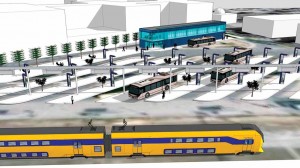A project is on to utilise energy created and stored by regenerative braking from trains to power electric buses.
Story by:
Team CV
Dutch company Hedgehog Applications will soon undertake a pilot project in Apeldoorn. A large battery will be used to store energy regenerated by braking electric trains. This energy will be used to recharge electric buses and cars. Energy created and stored by regenerative braking from trains will thus be used to charge electric buses in the Netherlands. In what is being looked upon as a experiment that would open the doors to new avenues of powering electric vehicles, especially in the domain of public transport, the pilot project will initially include four electric buses. Conducted in partnership with Dutch rail operator ProRail, the pilot project according to Hedgehog sources, will also look at the use of stored energy to power railway signalling and control systems in an unlikely event of a power cut. One such power cut hit Amsterdam’s transport network in January.
What makes the project interesting is the application of technology to achieve the end result. Regenerative braking is in widespread use. It captures energy that is otherwise wasted. In the case of railways, energy is wasted when there is no accelerating train nearby to accept energy from a slowing train. Onboard energy storage can be used instead, but Hedgehog plans to use batteries at the stations as they offer a much higher capacity than compact on-board systems. The electronics can also be simpler and cheaper than energy recovery systems which are designed to feed regenerated power back to the supply grid, and the system can operate independent of train operators. According to Arjan Heinen, Director, Hedgehog Applications B.V. – Hedgehog Applications, the amounts of energy that can be recovered might be small on the scale of the overall power usage of a national railway network, but are potentially well-matched to the scale of small electric urban bus services. “Buses and trains are brothers and sisters” adds Heinen. “They are ideal partners, and we can’t throw away energy,” he explains.





















